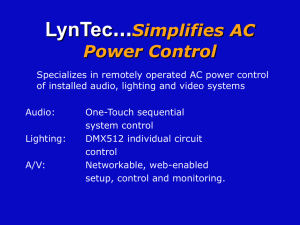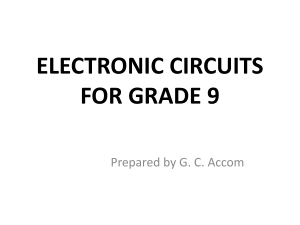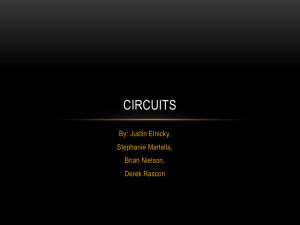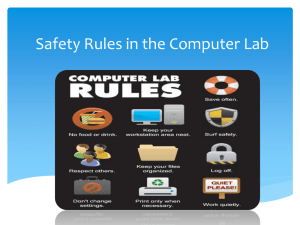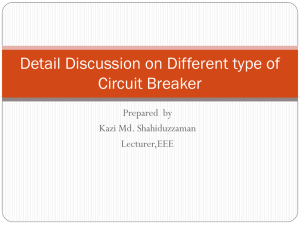Circuit Breakers
advertisement
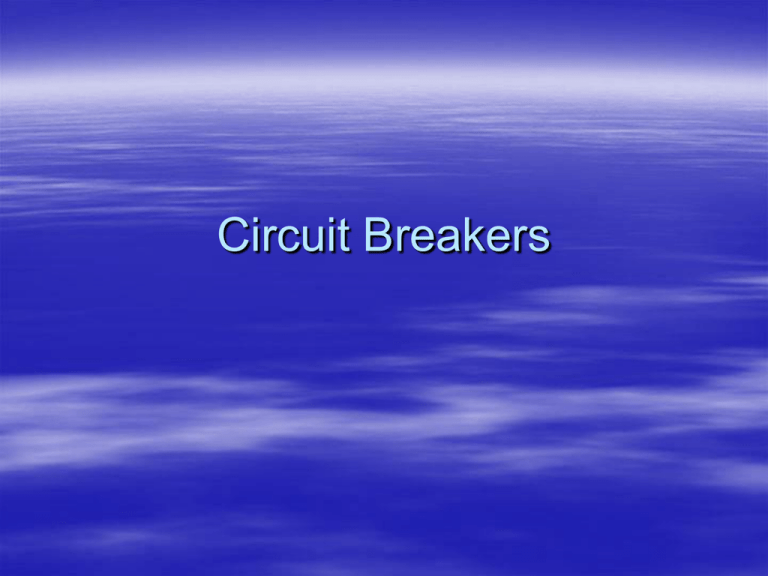
Circuit Breakers Definition Device designed to open the circuit automatically under abnormal conditions without damage to itself when properly applied within its rating. Circuit breakers are categorized by the method employed to interrupt the circuit current (extinguishing the arc) when the current contacts open. Four major types Air Oil Vacuum Gas (SF6 or SF6/CF4) Two methods circuit breakers sense circuit current Thermal Magnetic Thermal circuit breaker Sense circuit current through the production of heat Generally uses some type of heating element in series with the load The heater is located close to a bimetallic strip The bimetallic strip is mechanically connected to the moveable contacts Thermal circuit breaker There is a time delay before the circuit opens The time delay depends on the amount of overcurrent Thermal Circuit Breaker Schematic symbol Schematic Magnetic circuit breaker Also known as Instantaneous trip circuit breaker Senses circuit current by connecting a coil in series with the load When current flows thought the circuit, a magnetic field is established around the coil The magnetic field attracts the metal arm of a solenoid Magnetic circuit breaker When the magnetic field becomes intense enough the metal arm mechanically opens the contacts There is very little time delay in opening the contacts when an abnormal condition occurs Magnetic Circuit Breaker Schematic symbol Schematic Thermomagnetic circuit breaker Most common type Schematic symbol Employs both thermal and magnetic current sensors Four Major Types Air Oil Vacuum Gas (SF6 or SF6/CF4) Air circuit breaker Divided into four basic types 1 Moulded Case CB (120V – 750V) 2 Low-Voltage Power CB (120V – 750V) 3 Medium-Voltage CB (1.5kV – 69kV) 4 High-Voltage CB (115kV – 230kV)


